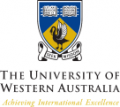R&D for Plant Biosecurity
Optimal Investment in R&D for Plant Biosecurity - Final Report
| Publication Type | Report | |
| Year of Publication | 2012 | |
| Authors | White, B.; Sadler, R.; Florec, V.; Dominiak, B.; Morey, K.; Buetre, B.; Abougamous, H. | |
| Pages | 84 |
The operation of export supply chains for agricultural and horticultural produce depends on compliance with the biosecurity standards set for export markets. This project used a systems based approach to analyse the optimal economic design of biosecurity management strategies based on biophysical, economic and market regulation factors.
Research outcomes:
The project developed two detailed biosecurity models, one for area wide management for Qfly in the Sunraysia Pest Free Area (PFA) and the other for Network Wide Management of stored grain pests in Western Australia. Both of these models can be used to address a wide range of biosecurity issues. Some examples are given below.
The results from the Qfly analysis shows the benefits of the current PFA and the optimal investment in surveillance. In terms of R&D it is possible to assess the upper bounds of returns to investment in improved border control, surveillance and eradication technology.
The stored grain analysis shows the costs of operating the grain supply network in the Kwinana zone and the costs to producers and the bulk handlers of closing sub-standard grain stores. The stored grain analysis shows that, in the absence of strong phosphine resistance, the cost of biosecurity lapses are relatively small so long as phosphine remains an effective fumigant.
Research implications:
- It is economically optimal to undertake surveillance on a grid of sentinel surveillance points spaced 830 m apart. This implies that the current surveillance schedule of one trap every 1000 m in production areas and one trap every 400 m in residential areas largely satisfies economic criteria in addition to the biosecurity criteria.
- Optimal surveillance does not vary significantly across the PFA.
- By far the greatest potential cost savings from R & D are to be realised from investments that reduce the cost of post-harvest treatments. This is because Qfly outbreaks are an intrinsic risk in the system, and that benefits of improved post-harvest treatment are realised over the whole of the FFEZ, rather than solely within the PFA.
- The cost of implementing AWM over the whole FFEZ region is more than offset by the post-harvest cost savings realised within the Sunraysia PFA, and confirms the findings of previous BCA of the Tri-State FFEZ strategy. However, there is significant risk of elevated incidence of Qfly outbreaks over decadal time scales, even in the absence of climate change, which will impact significantly on the profitability of the FFEZ scheme. To persist with AWM through these periods and to justify the public expense will likely be politically more difficult. However, even in the worst case scenarios the FFEZ scheme pays for itself, rather than incurring a net loss.
Implications for Grain NWM
- Contracts for grain delivery should have a clear incentive structure that rewards the delivery of insect free grain.
- Increasing the frequency of receival site monitoring or increasing its effectiveness through new technology to detect live insects and insect eggs is beneficial as it indirectly increases the level of biosecutiy effort on farm.
- Changes in the bulk handling network, for instance a receival site closure, should be assessed in terms of changes in producer profits and bulk handler costs. Thus if overall there is a gain in profit from altering the inventory of storage facilities then a change in those facilities should be considered.
- The current cost of infested grain not being detected until the port is relatively modest at a maximum of $1.5 million.
Acknowledgements:
- James Ridsdill-Smith
- DAFWA - Richard Johnston, Darryl Hardie, Rob Emery, Shashi Sharma, Francis De Lima, Bill Woods, Chris Newman, Maria deSousa-Majer, Mike Nunweek, Avril Russell-Brown
- I&I NSW - Kathryn Tobin, Richard Roger, Olga Ozols, Katina Lindhout, John Gould, Olivia Reynolds CBH - Ern Kostas, Graeme Smallman
- DSE Victoria - Emile Skender, Jaymie Norris BRS - Jodie Mewett, Rob Lesslie
- DPI Victoria – Gary D’Arcy, SallyAnn Harvey, Bill Fisher
- DEEDI QLD – Pat Collins
- BOM - Cathy Toby
- LPMA NSW – David Taylor
- CSIRO Entomology - Darren Kriticos, David Cook, Hazel Parry
- CRCNPB – Cain Roberts, Kirsty Bayliss
- QUT - Tony Clarke, Sama Low-Choy, Mark Stanaway, Solomon Balagawi, David Elmouttie
- UQ – Myron Zalucki
- UWA – Michael Renton, Mingren Shi, Juan Jose Garcia Adeva
- National University of Singapore - Roman Carrasco
- NEARMAP (for online image data)
- ABS (for online data).
- Industry groups (for data) - Citrus Australia, Murray Valley Citrus Board (MVCB), Australian Table Grape Association Inc (ATGA), Summer fruit Australia, HAL
PROJECT LEADER
A/Prof Ben White
Project Leader CRC70100: Optimal Investment in R&D for Plant Biosecurity
bwhite@fnas.uwa.edu.au
Phone: 08 6488 3409
Read More
PROJECT DETAILS
Complete
Institution
University of Western Australia
Term
March 2009 - November 2011
Budget
$393,175.00


